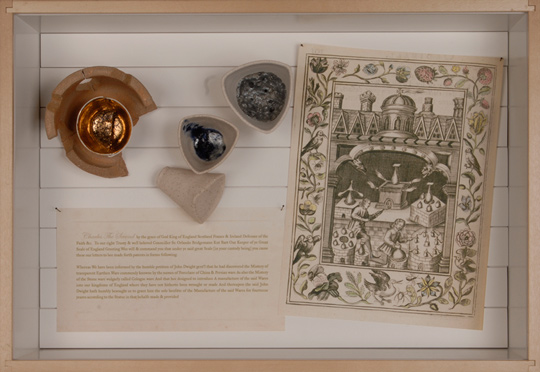The art and mystery of alchemy – the transmutation of one substance into something more valuable – was long pursued by western potters. Many were looking not for gold but for the magical Chinese formula for pure white porcelain. The potter John Dwight received a patent from England’s King Charles in 1672 that gave him the sole right to try to produce porcelain in England. While his experiments never resulted in anything close to the thin translucence or glass-like feel of real imported porcelain, Dwight did discover how to produce high-quality white stoneware that influenced British pottery for decades to come. The Dwight pieces on view in this case rank among the most important artifacts in English ceramic history.
Image of alchemist’s laboratory
taken from Elias Ashmole,
Theatrum Chemicum Britannicum
London, 1652.
Three crucibles and a saggar
modeled after seventeenth-century originals.
{Made by Michelle Erickson, 2008.}

